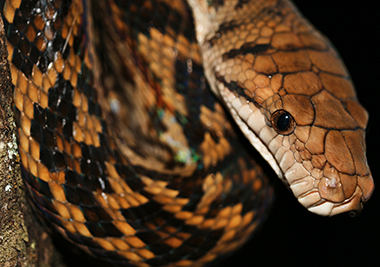Daintree Rainforest Fauna
Daintree Rainforest contains an extraordinary treasure-trove of fauna, including magnificently adapted mammals, birds, reptiles, frogs, spiders and insects. Each individual species of Daintree Rainforest Fauna is a model of adaptive genius, as is only able to be found with the refinement of time that the oldest rainforest in the world provides. Indeed, one of the greatest challenges is finding the wildlife at all; such is the capacity of Daintree Rainforest Fauna to secrete itself to avoid detection. Spiders, insects, birds, animals, frogs, reptiles can be quite prolific at certain times and seasons. The challenge for the presenter lies in knowing the habitats and food sources, then in being able to refine the focus to discover individual species during a rainforest tour.
Daintree Rainforest fauna is just as primitive in nature as the forest itself, after all the biodiversity within this ancient landscape evolved together maintaining a balance and diversity over an estimated 170 million years. Daintree Rainforest on the eastern flank of Thornton Peak contains the majority of attributes that have contributed to this estimated age as the world’s oldest rainforest; flora relicts from ages past, primitive animal species, examples of ongoing evolution and speciation, rare and endemic flora and fauna and living links with past incursions of fauna and flora from south-east Asia.
Seasonal discoveries enrich our reservoir of knowledge as we study each species and determine its role and function within amazingly diverse and complex ecosystems. We have found that our orchard, containing imported tropical fruits from Asia and South America, actually offers scope to see the wildlife in more open and advantageous positions. It is the relationships of the wildlife and its connection with its environment that has taught us the more important lessons of conservation.
We noted the appearance of distinctive bite marks in the new leaves that were emerging on the Soursop trees, an Amazonian custard apple that is part of our orchard. We found the strong stick insect, Anchiales briareus, resembling the veins of young leaves, but changing to branch-like insects up to 25 cms long during the summer months. Their camouflages was so perfect that they avoided detection, staying perfectly still, just like a stick. We became so engrossed in searching these critters out, that we also discovered even better exponents of camouflage and mimicry.







